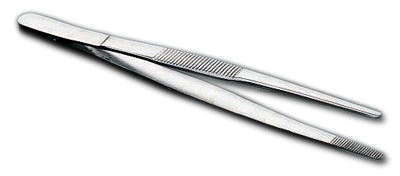MULTIGATE DRESSING FORCEPS, STAINLESS NON-STERILE, 12.5CM, SATIN, EACH (06-303)
- Brand: Aaxis Pacific
- Product Code: 10110212
-
Ex GST: AU$2.85
SPLINTER FORCEPS, STAINLESS NON-STERILE, 12.5CM, SATIN
General Information
Different types of surgical instruments are used
for number of functions such as:
- Clamping
- Grasping
- Holding
- Cutting
- Dissecting
- Dilating
- Suctioning etc.
Instruments must be inspected before, during, and
after the surgical / examination procedure.
Main Risks associated with the surgical instruments use are:
Infection due to improper sterilization techniques.
· Improper use of instrument by
operator.
· Leaving an instrument inside
patient’s body.
· Use of defective instrument.
Now we go through the introduction and usage of some of the most commonly used
surgical instruments
Forceps
Originated from
the Latin word “Forca” meaning to trap, grip something.
In medical field, forceps are used for grasping tissues, blood vessels, holding
organs. These are commonly made from Stainless Steel (Martensitic)
Normal they are either with locks (ratchet) such as Kelly forceps, mosquito
forceps, Crile forceps or without locks (ratchets) such as Thumb dressings
forceps.
Some of the different types of forceps used in the medical field include:
Dressing
Forceps: 
These forceps are normally used during dressing of
wounds and removal of dressings.
These are manufactured with straight, curved and with special angled tips for
various tasks during operations.
Very fine delicate dressing forceps are used in eye surgery.
Hemostats Forceps: 
Such forceps are
used to prevent the flow of blood from operating area (blood vessels) during
surgery i.e. for controlling haemorrhage, for grabbing and holding.
All of the haemostats forceps are with locking mechanism called ratchets to
control the grasping action of the instrument.
Some of the types include Crile, Kelly, Mosquito, mixter, splinter etc.
Splinter Forceps: 
Such forceps are
used for special purposes like removing sharp pointed pieces of bones
(splinter) from flesh, to handle sutures, and to manipulate very narrow areas
due to their fine tip and triangular shape.
These are manufactured with smooth and serrated tips, curved, straight with or
without ratchets.
Different types of splinter forceps include carmalt, Hunter, Stieglitz etc.
Sponge Forceps: 
Due to their
holding shapes these are commonly used for clamping, holding, gripping,
twisting tissues, inserting any external things into the body such as IUD.
Sponge forceps are extensively used in gynaecological procedures like during
abortion, sterilization, examinations and for handling sponges, gauzes, wipes
etc.
Needle Holders:
These are mainly
used to hold needles during suturing procedure.
These are available with normal tips and with tungsten carbide tips ( for more
hard and firm needle grip with gold plated rings for identification from normal
ones).
Usually these are with ratchets (automatic lock) to hold the needle during
suturing.
Obstetric Forceps: 
These forceps are
used to assist in the child delivery procedure. They are designed to smoothly
hold and pull the baby head during vaginal delivery.
Tissue Forceps: 
They differ with the dressing forceps due to their
teeth in jaws. These teeth provides better grip to hold Tissues. The teeth are
designed to avoid the damage to the tissues.
The types depend
on shape of the forceps and number of teeth on both sides like Adson tissue
forceps 1×2 teeth, Adson brown tissue forceps 9×9 teeth, Allis tissue forceps
(hinged ring-ratchet type).
Tubing Forceps (clamp):
These are used to
introduce tubes in to small blood vessel during operation hence also known as
tubing introducer.
Towel Forceps: 
These are used to
hold/place pieces of towel/drapes at correct position in the operating area.
They are very important surgical instruments tool and helps in recovering
towels pieces after the operation.
Tags: Surgical Instruments, Medical Consumables, Scissors, Forceps

